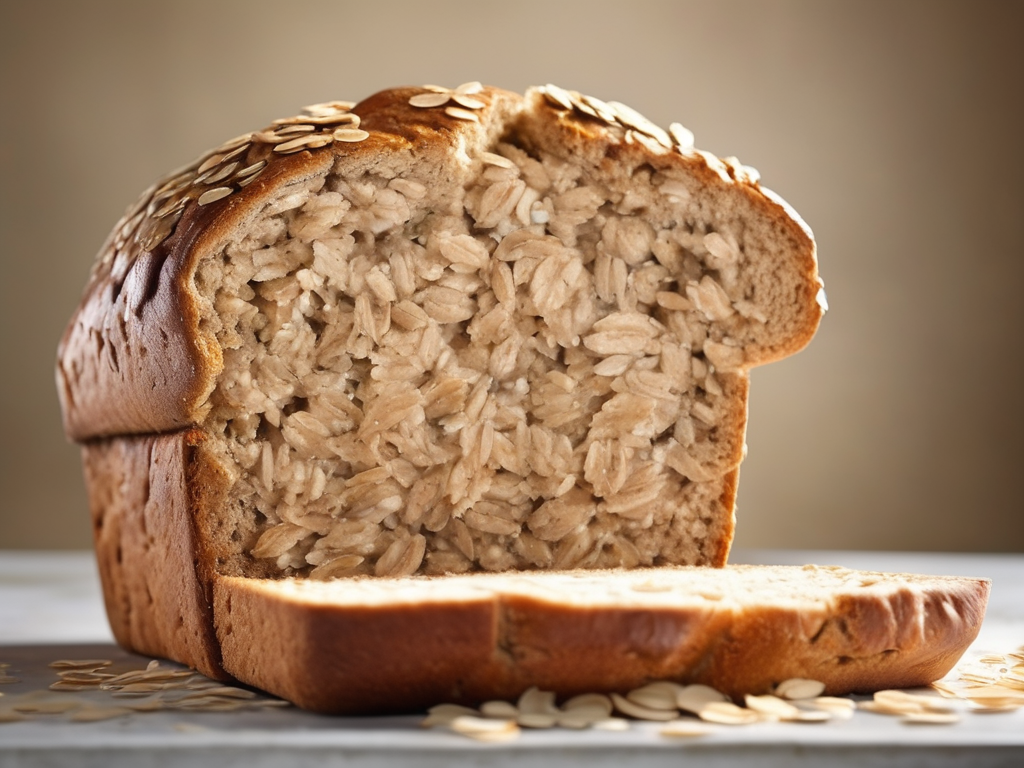
Extending the Shelf Life of Oatmeal Bread: Tips for Keeping Your Homemade or Bakery Fresh
Get Your Free Food Safety Cheat Sheet
30 most common foods with instant answers. Print it and stick it on your fridge—completely free!
Extending the Shelf Life of Oatmeal Bread: Tips for Keeping Your Homemade or Bakery Fresh
Are you a fan of the hearty and nutritious oatmeal bread? Whether you bake it yourself at home or buy it from a bakery, preserving its freshness and extending its shelf life can sometimes be a challenge. Oatmeal bread is not only delicious but also packed with fiber and nutrients. To help you enjoy your oatmeal bread for longer without compromising its taste and quality, here are some expert tips and guidelines to follow. (Oatmeal bread)
Understanding Oatmeal Bread Shelf Life
Oatmeal bread, like any other baked good, has a limited shelf life due to its ingredients and moisture content. Factors such as temperature, humidity, and exposure to air can impact how long your oatmeal bread stays fresh. Here's a breakdown of the typical shelf life of oatmeal bread:
- Homemade Oatmeal Bread: Generally, homemade oatmeal bread can stay fresh for 2-3 days at room temperature. It's best to store it in a bread box or airtight container.
- Bakery Oatmeal Bread: Bakery oatmeal bread usually has preservatives that can extend its shelf life to about 5-7 days. It's essential to follow the storage guidelines provided by the bakery.
Now, let's dive into some practical tips on how to extend the shelf life of both homemade and bakery oatmeal bread.
Tips for Extending the Shelf Life of Oatmeal Bread
1. Proper Storage
- Cool and Dry Location: Store your oatmeal bread in a cool, dry place away from direct sunlight and heat sources.
- Airtight Container: Use an airtight container or a resealable plastic bag to prevent moisture loss and keep the bread fresh.
- Avoid Refrigeration: Refrigeration can dry out the bread faster. It's best to store oatmeal bread at room temperature.
2. Freezing Oatmeal Bread
- Slice Before Freezing: If you have a large loaf, slice the bread before freezing to make it easier to thaw individual portions.
- Wrap Properly: Wrap the bread slices or the whole loaf tightly in plastic wrap or aluminum foil before placing them in a freezer bag.
- Thawing: When ready to eat, thaw frozen oatmeal bread at room temperature or in the refrigerator for best results.
3. Avoid Moisture
- Avoid Humid Areas: Moisture can lead to mold growth on bread. Keep your oatmeal bread away from humid areas such as the kitchen sink or stovetop.
- Use Bread Box: A bread box with ventilation can help regulate moisture levels and keep the bread fresh for longer.
4. Reheating Oatmeal Bread
- Oven Method: To revive stale oatmeal bread, preheat your oven to 350°F, sprinkle some water on the bread, and bake for 10-15 minutes.
- Toaster or Grill: Toasting or grilling slices of oatmeal bread can help freshen them up and add a crispy texture.
5. Quality Check
- Visual Inspection: Check for any signs of mold, unusual odors, or texture changes before consuming oatmeal bread.
- Taste Test: If in doubt, do a taste test to ensure the bread hasn't gone bad.
Conclusion
By following these tips and guidelines, you can enjoy your oatmeal bread for an extended period while maintaining its freshness and flavor. Whether you prefer homemade oatmeal bread or bakery-bought loaves, proper storage and handling are key to preserving this wholesome bread. Experiment with different storage methods and find what works best for keeping your oatmeal bread at its best quality. Remember, freshness is key to a delightful oatmeal bread experience.
Now that you have the knowledge to extend the shelf life of your oatmeal bread, why not bake a fresh batch or grab a loaf from your favorite bakery? Enjoy the delicious and nutritious goodness of oatmeal bread while making the most of its extended freshness!
For more information and recipes on oatmeal bread, visit [oatmeal bread](/food/oatmeal bread).
Happy baking and savoring your oatmeal bread! (Oatmeal bread)
Authoritative Food Safety References
These agencies and university labs inform every tip and health precaution we publish.
USDA FoodKeeper – Cold Storage Guidelines
Official refrigerator, freezer, and pantry timelines maintained by the U.S. Department of Agriculture.
Visit USDA FoodKeeperFDA Produce Safety Rule & Grower Guidance
Field-to-fridge handling practices that prevent contamination of fruits, vegetables, and leafy greens.
Visit FDA Produce SafetyCDC Foodborne Illness Prevention Hub
Surveillance-backed guidance on pathogens, symptoms, and steps to reduce foodborne illness risk.
Visit CDC Food SafetyUC Davis Postharvest Technology Center
University research detailing optimal storage atmospheres for produce after harvest.
Visit UC Davis PostharvestPenn State Extension – Home Food Preservation & Safety
Peer-reviewed extension bulletins on safe canning, chilling, and reheating practices.
Visit Penn State ExtensionGet Your Free Food Safety Cheat Sheet
30 most common foods with instant answers. Print it and stick it on your fridge—completely free! Want more? Upgrade to the complete guide with 70+ foods.
Scan your food directly and get instant safety info using our AI-powered camera feature.